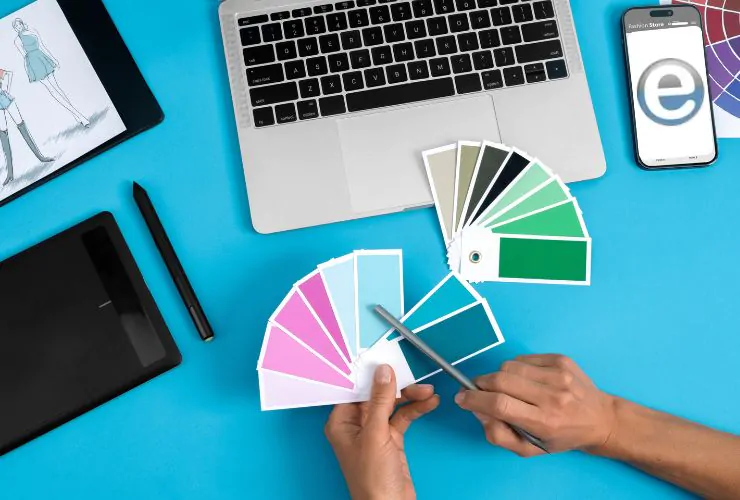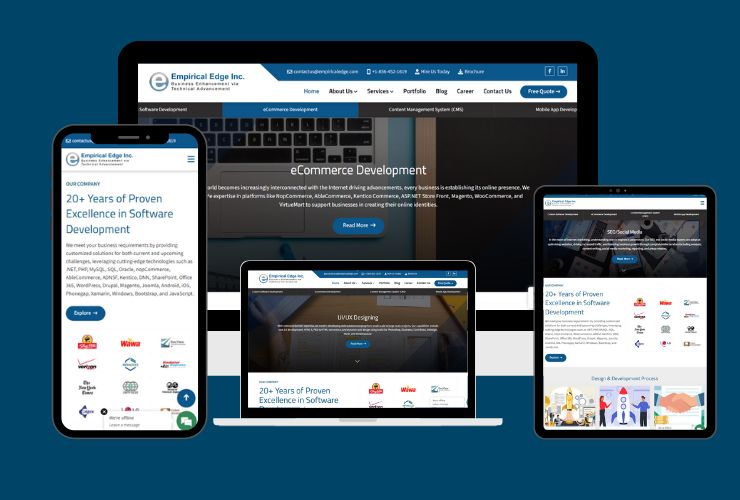In our quickened digital age, customers are always interacting with websites, apps, and digital services—shifting among them in a matter of minutes. Consistency in design of UI is no longer a luxury in such a situation. It is essential that a phenomenal user experience that is frictionless, user-focused, and consistent be provided.
Whether color scheme, typography, icons, composition, or navigation flow, design consistency makes your users at ease and ready to use your product. It removes friction, facilitates smooth interaction, and establishes your brand identity.
What Is UI Consistency?
UI consistency is the application of the same visual and interactive building elements in every aspect of a digital product. It includes:
- Consistent styles and locations for buttons: Primary actions should be in the same location and share the same style language.
- Consistent color schemes and typographies: Typographies and color schemes should always be used to encourage branding and readability.
- Consistent navigation and layouts: Menus, sidebars, and navigation flows should act consistently across different screens.
- Reusable components and patterns: Shared design principles and shared elements such as modals, input fields, and cards and shared usage of code wherever it is being utilized.
Consistency is not to make every feature exactly the same; it’s to create a strong foundation that individuals can connect to and believe in right off the bat.
Why UI Consistency Matters
1. Enhances Usability
A consistent UI minimizes cognitive load to adapt to your product. When every screen has familiar tendencies, users can navigate more easily without constantly needing to reorient. That translates to less onboarding, fewer errors, and more accomplished.
2. Builds User Trust
Inconsistency in the UI—e.g., mixed font, varying buttons, or mixed colors—makes your product look incomplete or untrustworthy. Consistency is a sign of professionalism and tells users that the product is well-made and safe. Users will tend to trust and return to a product that behaves predictably.
3. Strengthens Brand Identity
Your UI is one of the best expressions of your brand. End-to-end consistency in using branding attributes—logos, color schemes, typography, iconography—bolsters your identity and enhances a lasting experience. When design elements are identical across touchpoints, your brand looks cohesive and trustworthy.
4. Reduces Cognitive Load
Folks don’t want to care about working with your interface—they want to accomplish things. Regular patterns (like standard icon usage, form behavior, and button styles) allow users to trust their habits. This leads to faster interactions, fewer frustrations, and higher satisfaction.
5. Facilitates Scalable Design
As your product expands—new markets, new teams, new features—UI consistency makes it easy to scale. One design system with well-defined rules and components enables everybody to start on the same page. This reduces development time, enhances code quality, and preserves visual cohesion across your whole platform.
Getting UI Consistency
1. Establish a Robust Design System
A design system is a set of reusable components, design guidelines, and style rules to impose consistency on teams. Figma, Sketch, or Adobe XD can visually and team-enforce such a system.
2. Audit Your Existing UI
Conduct a thorough audit to find inconsistency in spacing, layout, fonts, color usage, and interactivity. Fixing even minor inconsistencies will dramatically improve the user experience.
3. Get Design and Development Teams Aligned
UI consistency only happens if every team, designers to developers, are in sync. Foster cross-functional collaboration and use shared libraries or style guides.
4. Leverage Design Tokens and Shared UI Components
When developing, using design tokens (color, font, spacing variables) and shared UI components ensure consistency and avoid duplicated code.
5. Test and Iterate Often
Conduct user testing to find where the users are stuck or are struggling. These will usually reflect inconsistency or ambiguous patterns. Adjust and align the UI based on feedback.
Our UI/UX Design Services
We at Empirical Edge Inc. deliver cognitive, user-focused design solutions that actually impact. We look to bring user needs and business goals together with seamless digital experiences that are not only beautiful but solid in execution and scalable.
Our UI/UX services include:
- Mobile UI/UX Design Excellence
We design mobile user interfaces centered on user needs and fluid interactions that enable your app to provide value on every page—backed by solid offshore design and delivery capabilities. - Responsive Web Design
Our professionals help your web site adapt to any screen, offering consistent experiences on desktops, tablets, and smartphones. - User-Centric Interface Design
We excel at developing goal-centered and simple-to-use user interfaces—web, mobile, or enterprise software—so people can move around and take action. - End-to-End Branding and Visual Design
From color strategy all the way to logo and UI kits, we design high-end brand systems that are breathtaking across your digital offerings.
Want to bring the depth to your digital product with thoughtful UI/UX design? We can help make it a reality.
Last Thoughts
UI consistency is one of the key pillars of good digital product design. It’s not just about aesthetics—it’s about building trust with users, making them more usable, and creating systems that can scale up over time.
Small variations are sufficient to confuse users, undermine confidence, and forfeit conversions. But through attention to UI consistency—through design systems, audits, collaboration, and iteration—you can make your product feel like a seamless, branded experience users will love.
In an age where first impressions and ease-of-use matter more than ever, UI consistency is not so much great design—it’s good business.














